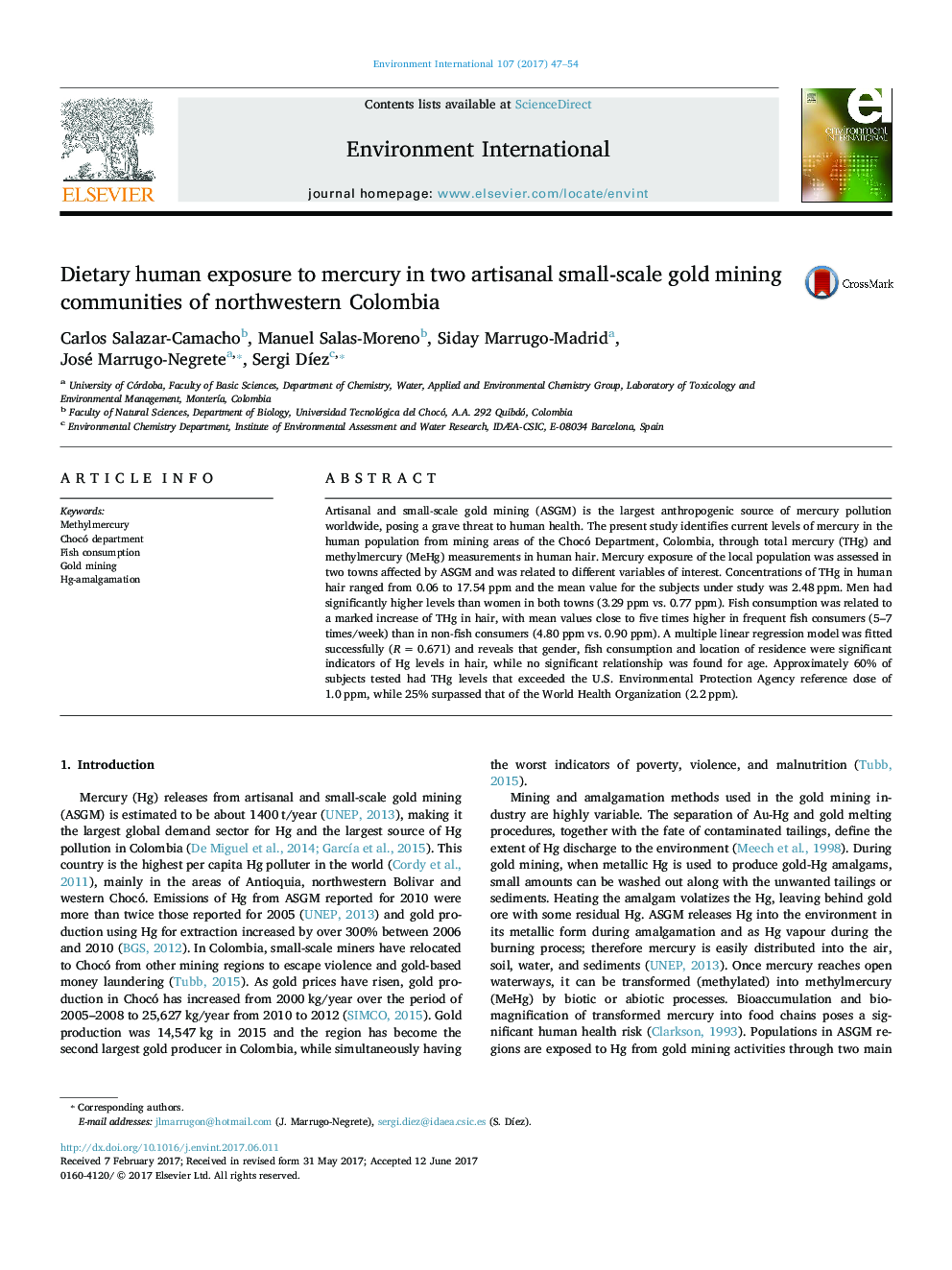| Article ID | Journal | Published Year | Pages | File Type |
|---|---|---|---|---|
| 5748303 | Environment International | 2017 | 8 Pages |
Abstract
Artisanal and small-scale gold mining (ASGM) is the largest anthropogenic source of mercury pollution worldwide, posing a grave threat to human health. The present study identifies current levels of mercury in the human population from mining areas of the Chocó Department, Colombia, through total mercury (THg) and methylmercury (MeHg) measurements in human hair. Mercury exposure of the local population was assessed in two towns affected by ASGM and was related to different variables of interest. Concentrations of THg in human hair ranged from 0.06 to 17.54Â ppm and the mean value for the subjects under study was 2.48Â ppm. Men had significantly higher levels than women in both towns (3.29Â ppm vs. 0.77Â ppm). Fish consumption was related to a marked increase of THg in hair, with mean values close to five times higher in frequent fish consumers (5-7 times/week) than in non-fish consumers (4.80Â ppm vs. 0.90Â ppm). A multiple linear regression model was fitted successfully (RÂ =Â 0.671) and reveals that gender, fish consumption and location of residence were significant indicators of Hg levels in hair, while no significant relationship was found for age. Approximately 60% of subjects tested had THg levels that exceeded the U.S. Environmental Protection Agency reference dose of 1.0Â ppm, while 25% surpassed that of the World Health Organization (2.2Â ppm).
Related Topics
Life Sciences
Environmental Science
Environmental Chemistry
Authors
Carlos Salazar-Camacho, Manuel Salas-Moreno, Siday Marrugo-Madrid, José Marrugo-Negrete, Sergi DÃez,
